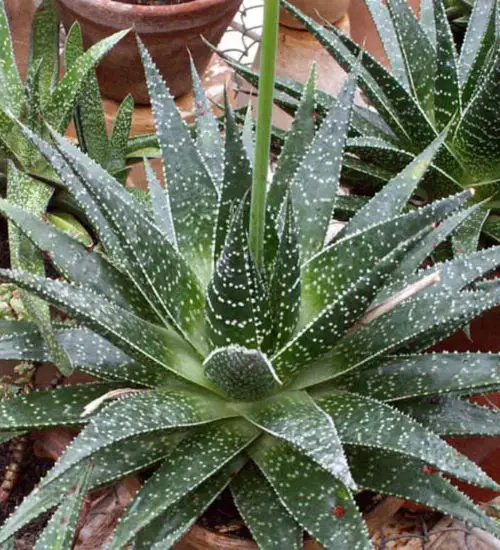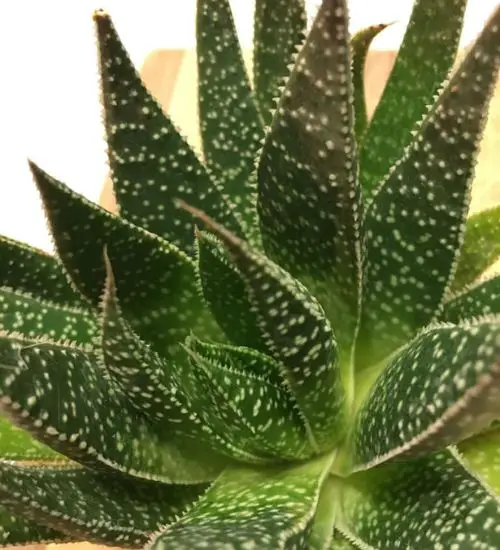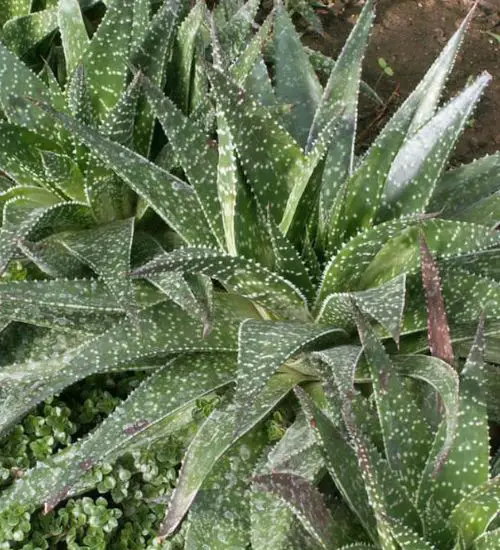Sun: full sun
Water: Typical water needs for a succulent
Temperature: Zone 9b from 25° F to 30° F (-3.9° C to -1.1° C) to Zone 11b from 45° F to 50° F (7.2° C to 10° C)
Winter Survival: Not cold hardy
Propagation: leaves, offsets
Flower: in the summer
Flower Type: Red, Yellow, Orange, white
Toxic: Generally non-toxic to humans and animals
Dormant: summer
Space Requirement: Indoors & Outdoors
Common Problems:
Where to buy Gasteraloe beguinii lizard tail?
Basc Care for Gasteraloe beguinii lizard tail
Watering
Regular watering period should be every 2 weeks
One simple tip for you is that you can use some online apps to check the soil status before you go water your succulents. I would recommend the ThePlantsCheck app, it has some nice features there.
Fertilizing
Only feed this succulent during its active growing seasons which means winter. Use the right fertilizer applied in the right amounts. Applying half-strength balanced fertilizer every month or so is recommended for optimal results.
Do not fertilize during summer as the plant is dormant.
Sun & Location Requirements for "Lizard Tail, Pearl Aloe"
To ensure Gasteraloe beguinii lizard tail grows to its fullest potential, make sure it receives plenty of direct sunlight. Aim for six hours or more of full sun a day – the ideal place would be near a sunny window or outdoors in your garden. Monitor the leaves closely; if they become pale or soft, relocate the plant to a sunnier spot.
Gasteraloe beguinii lizard tail is not cold hardy and does not survive in freezing conditions. However, there are certain strategies that can be used to help the plant thrive despite the chill of winter. Proper drainage and insulation are essential for succulent X during periods of extreme cold. Placing a layer of mulch or gravel on the soil around the plant can also help keep it warm.
In order to protect Gasteraloe beguinii lizard tail from freezing temperatures, it is important to provide adequate insulation and drainage. A layer of mulch or gravel will help protect the roots by keeping them warm during cold weather. In addition, protection from wind and sun exposure can help reduce the chances of frost damage.
Any succulents in the group will need a medium space to grow. You can place your pot at your table or window. Since this plant needs more space than mini succulents, you should consider do not plant them together with other succulents/plants.
Propagation
Propagating succulents by leaves is a great way to grow new plants from existing ones. Simply cut off a few healthy leaves from the mother plant and place them on top of a potting mix. Water the soil regularly, keeping it moist but not soggy, and soon you'll have brand new succulents!
One way to propagate Gasteraloe beguinii lizard tail is by offsets. Taking an offset from the mother plant and potting it into soil will give you a brand new succulent with minimal effort.
Toxicity

Gasteraloe beguinii lizard tail is generally non-toxic to humans and animals. However, it is important to be aware that certain parts of the plant may contain toxins which can cause mild skin irritation. It is advised that you keep the plants away from small children or pets, as they may unknowingly ingest them and suffer ill effects.


